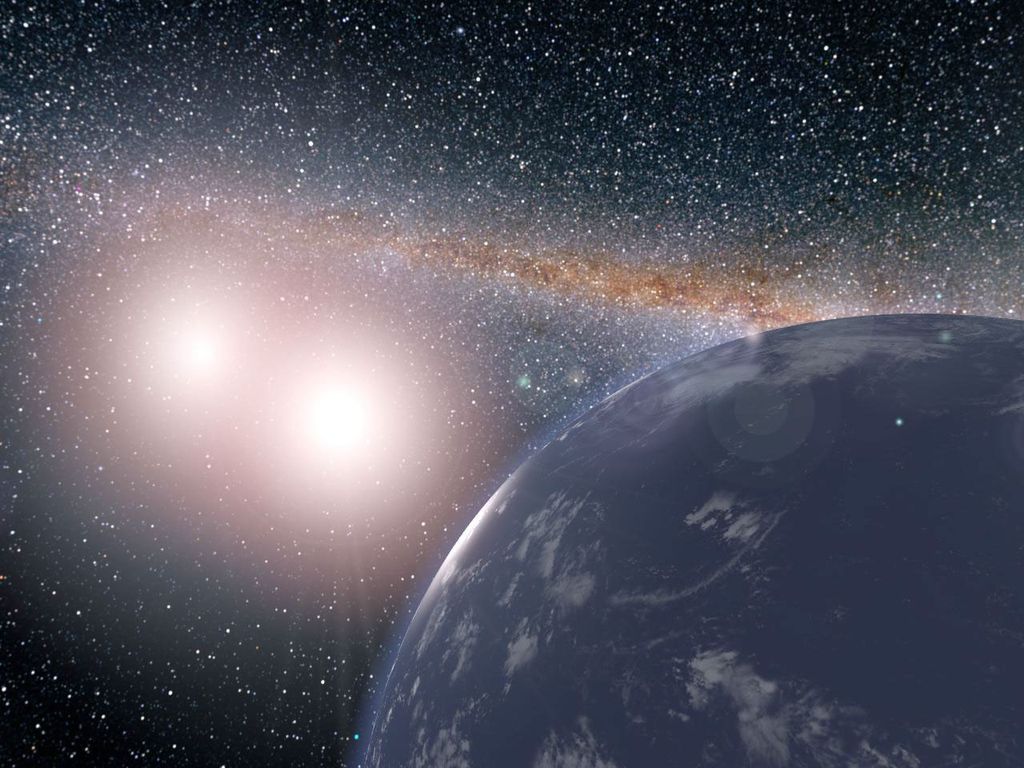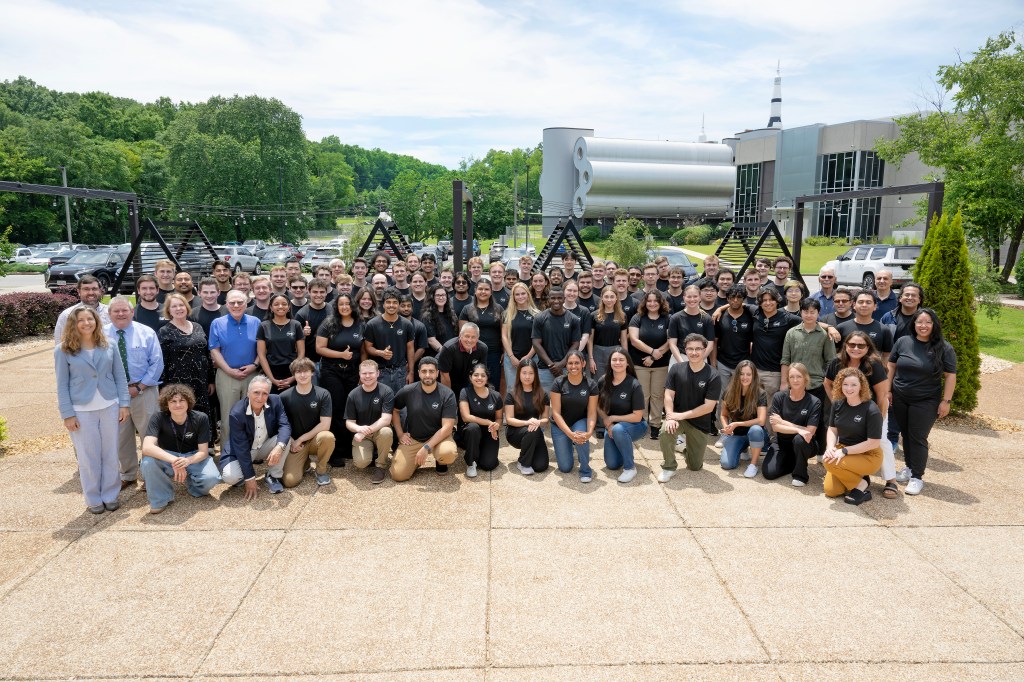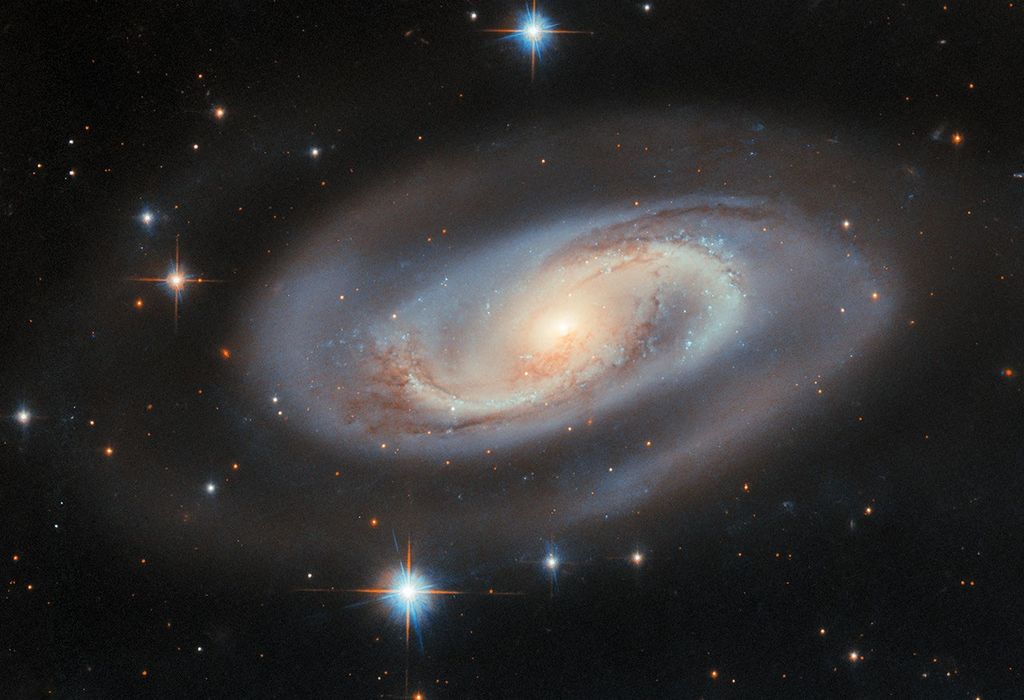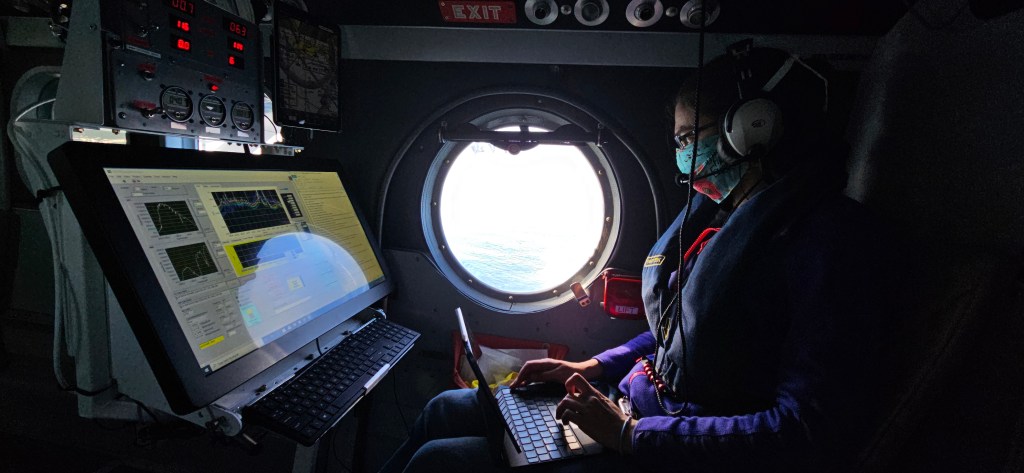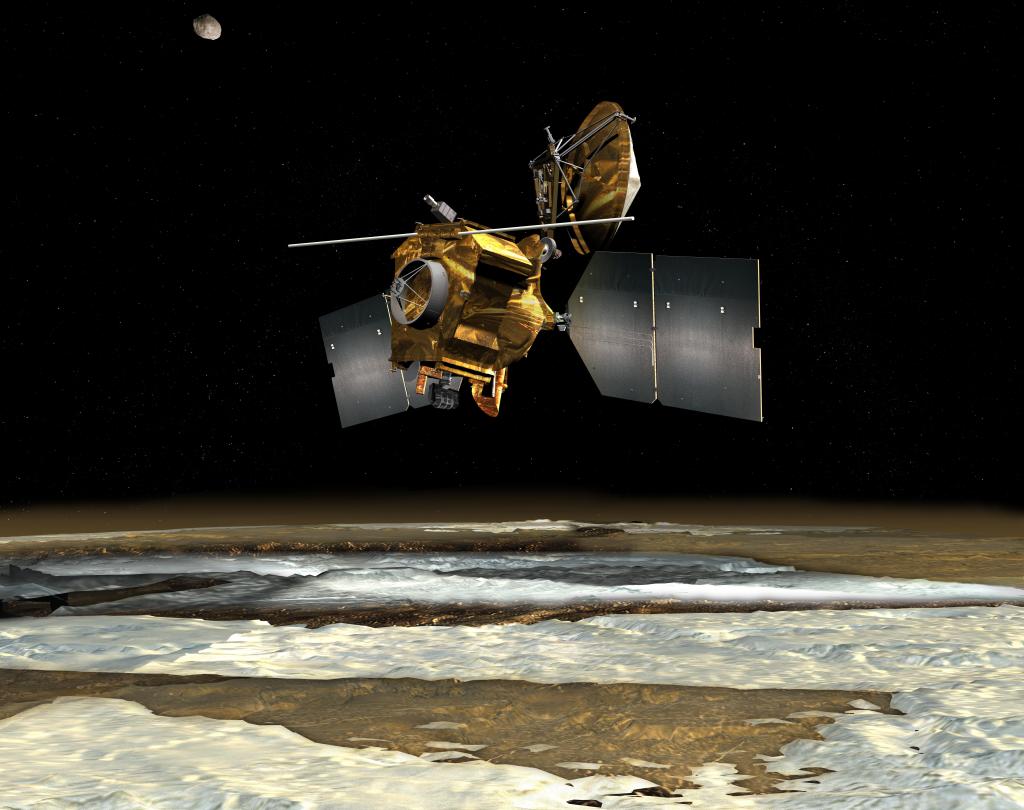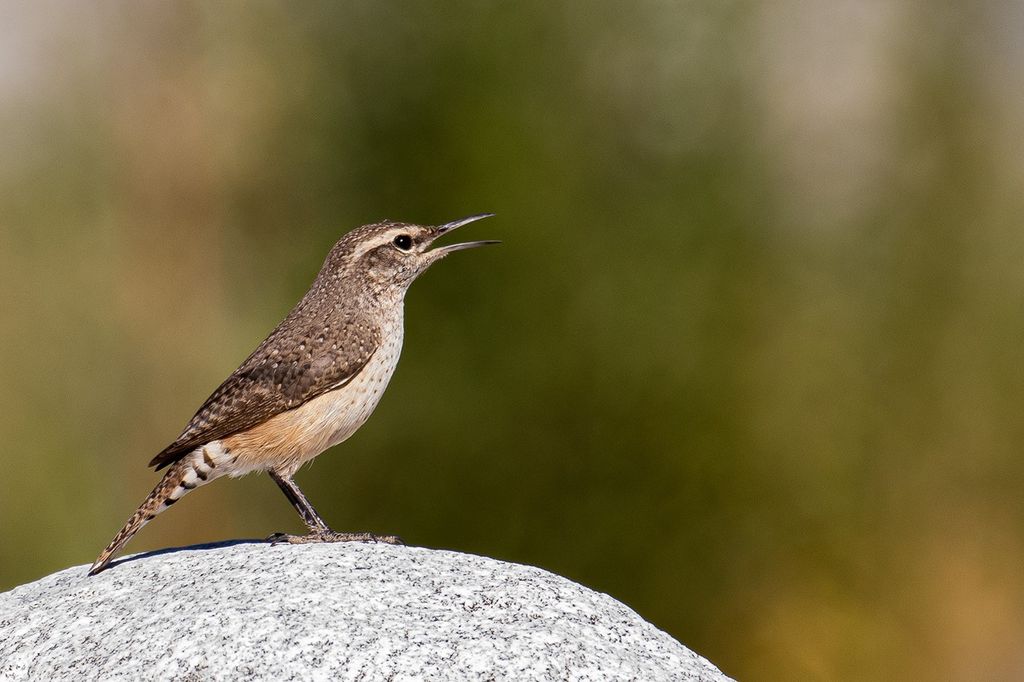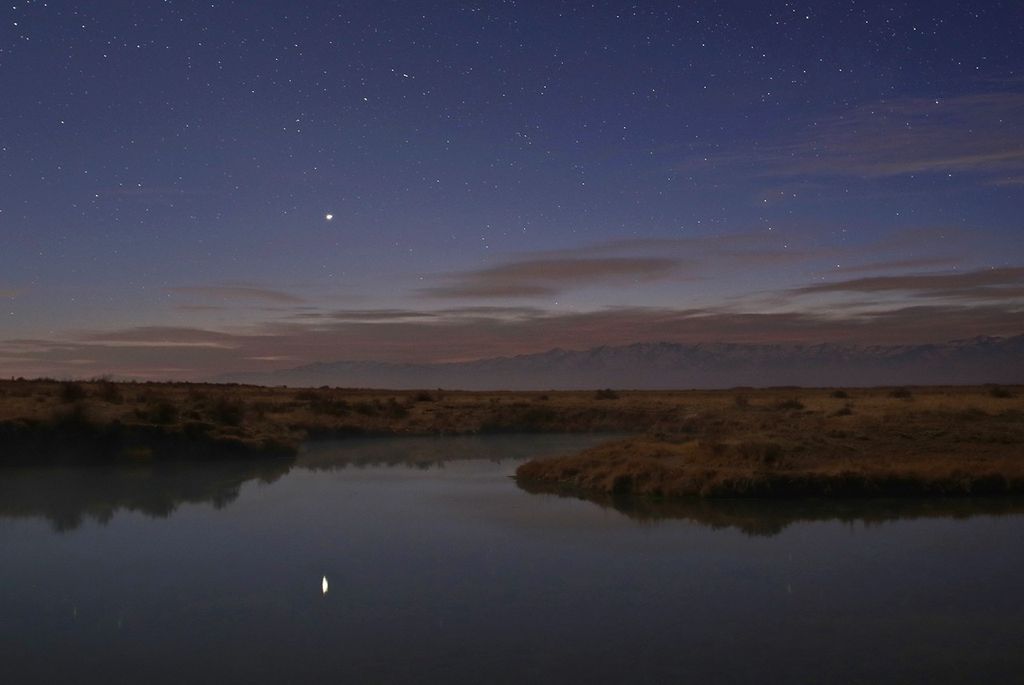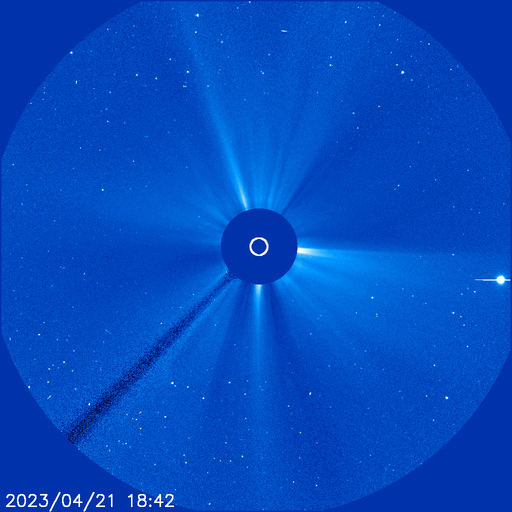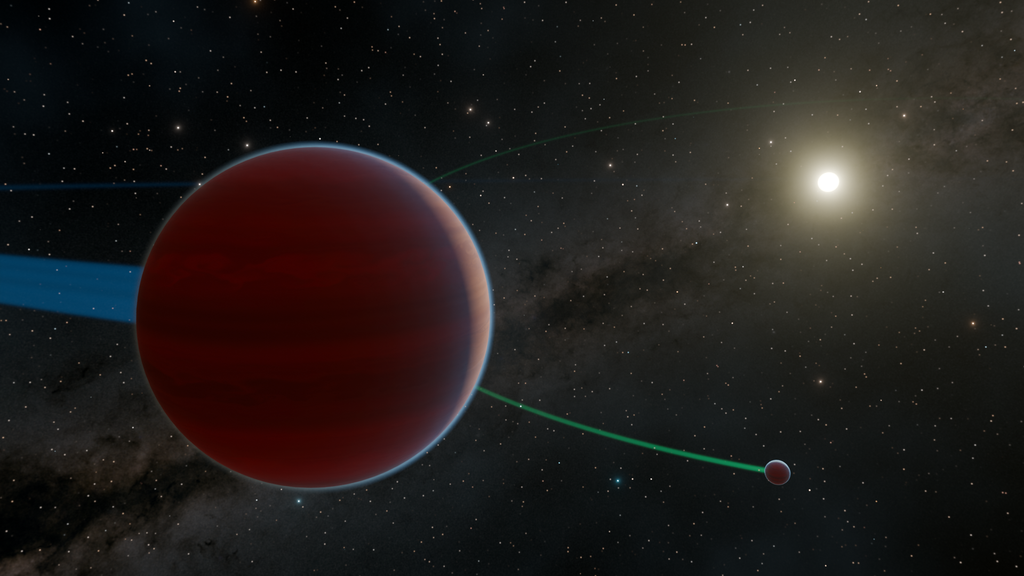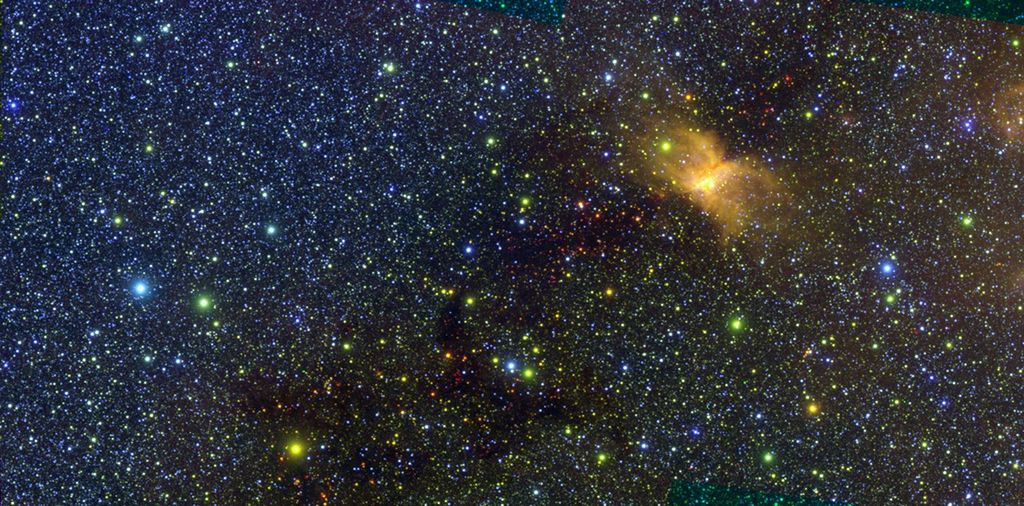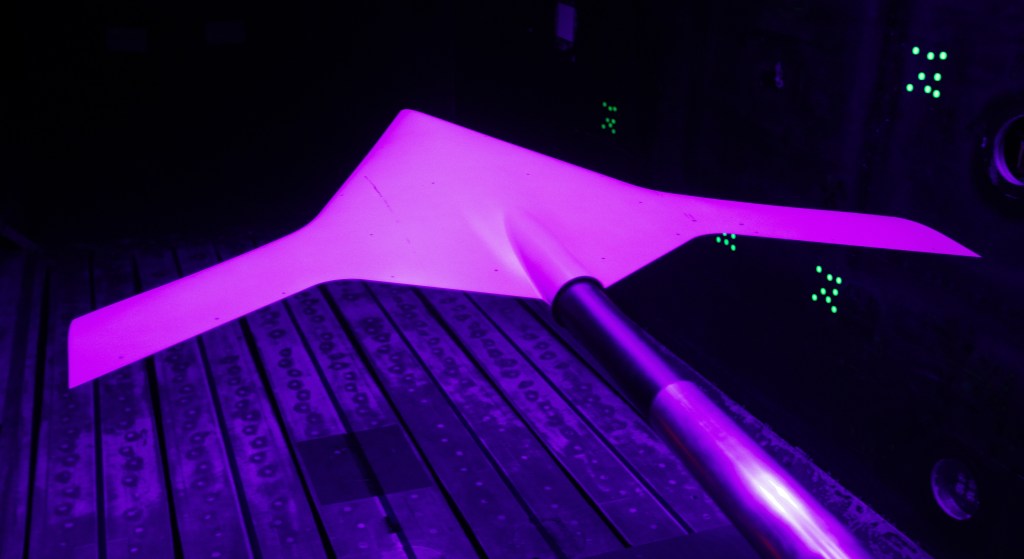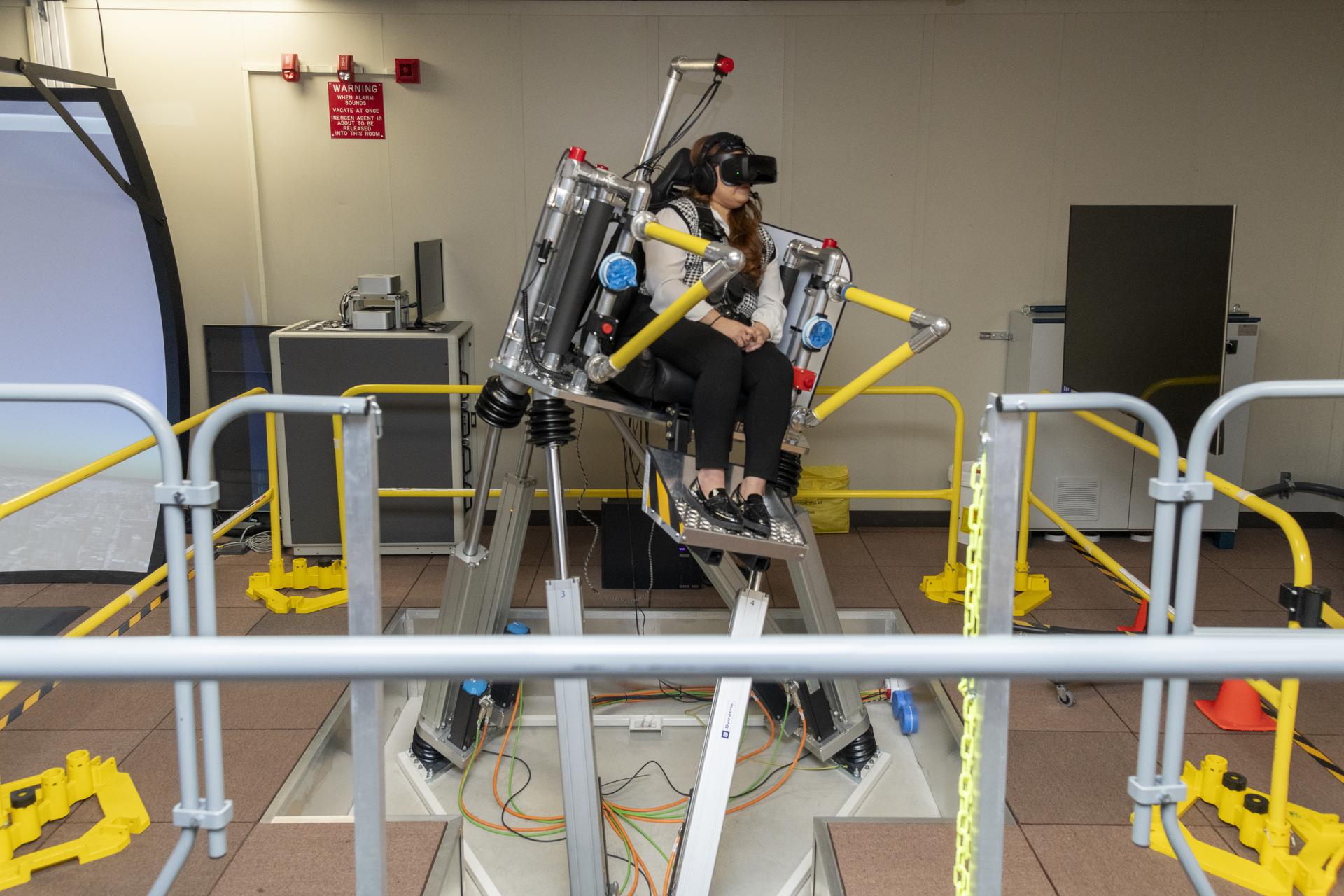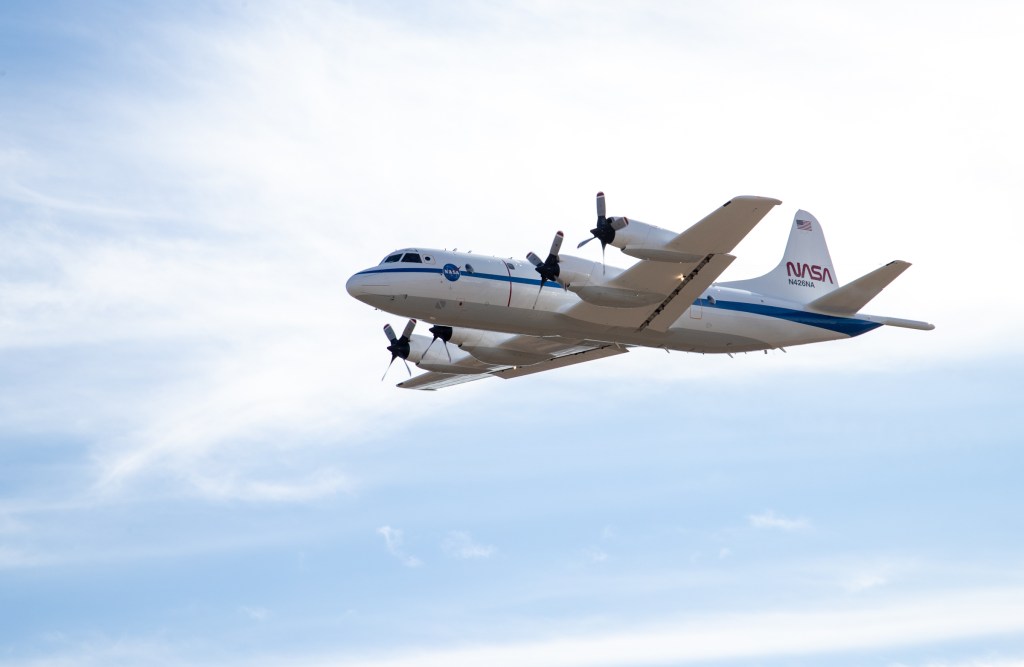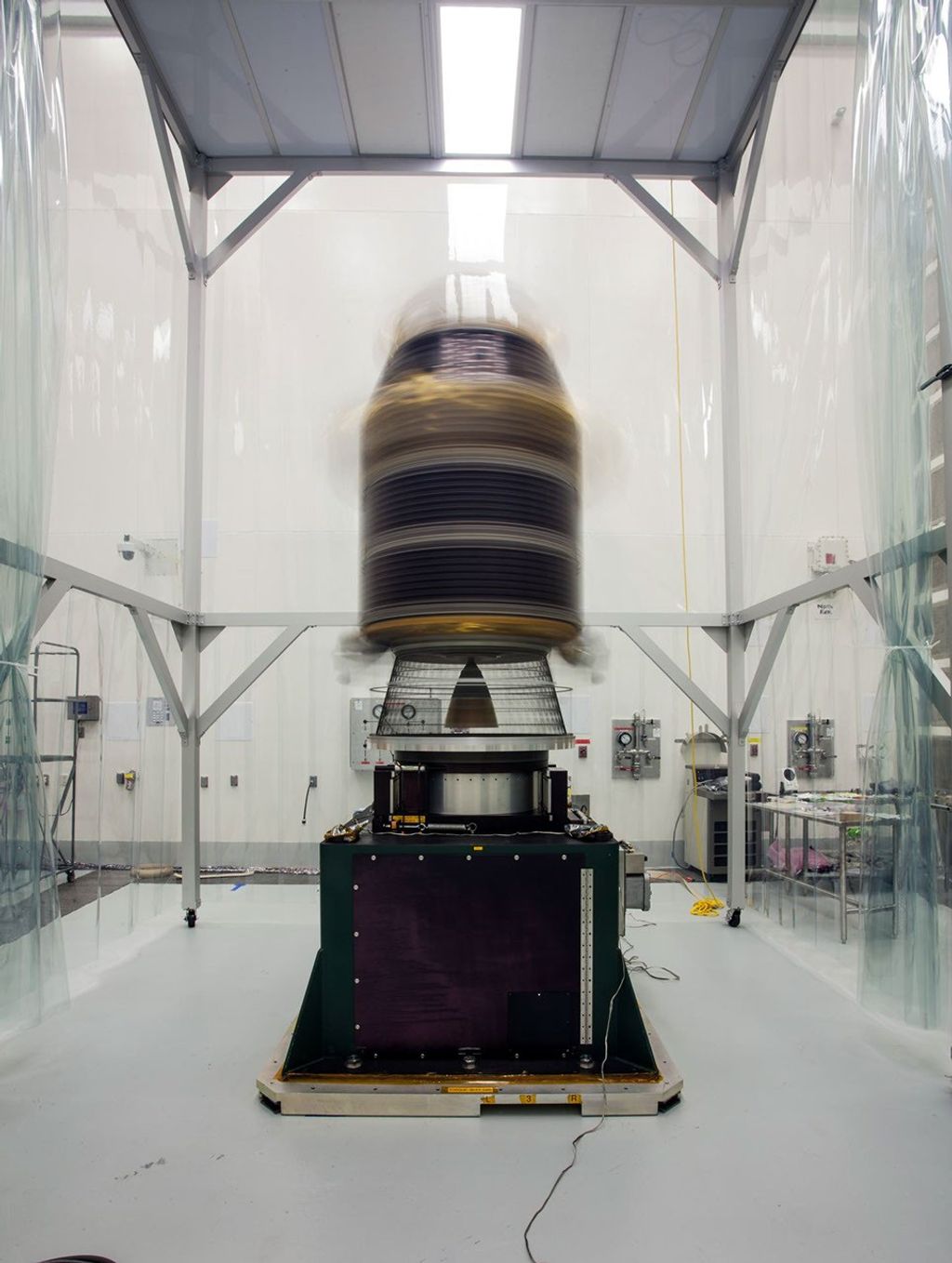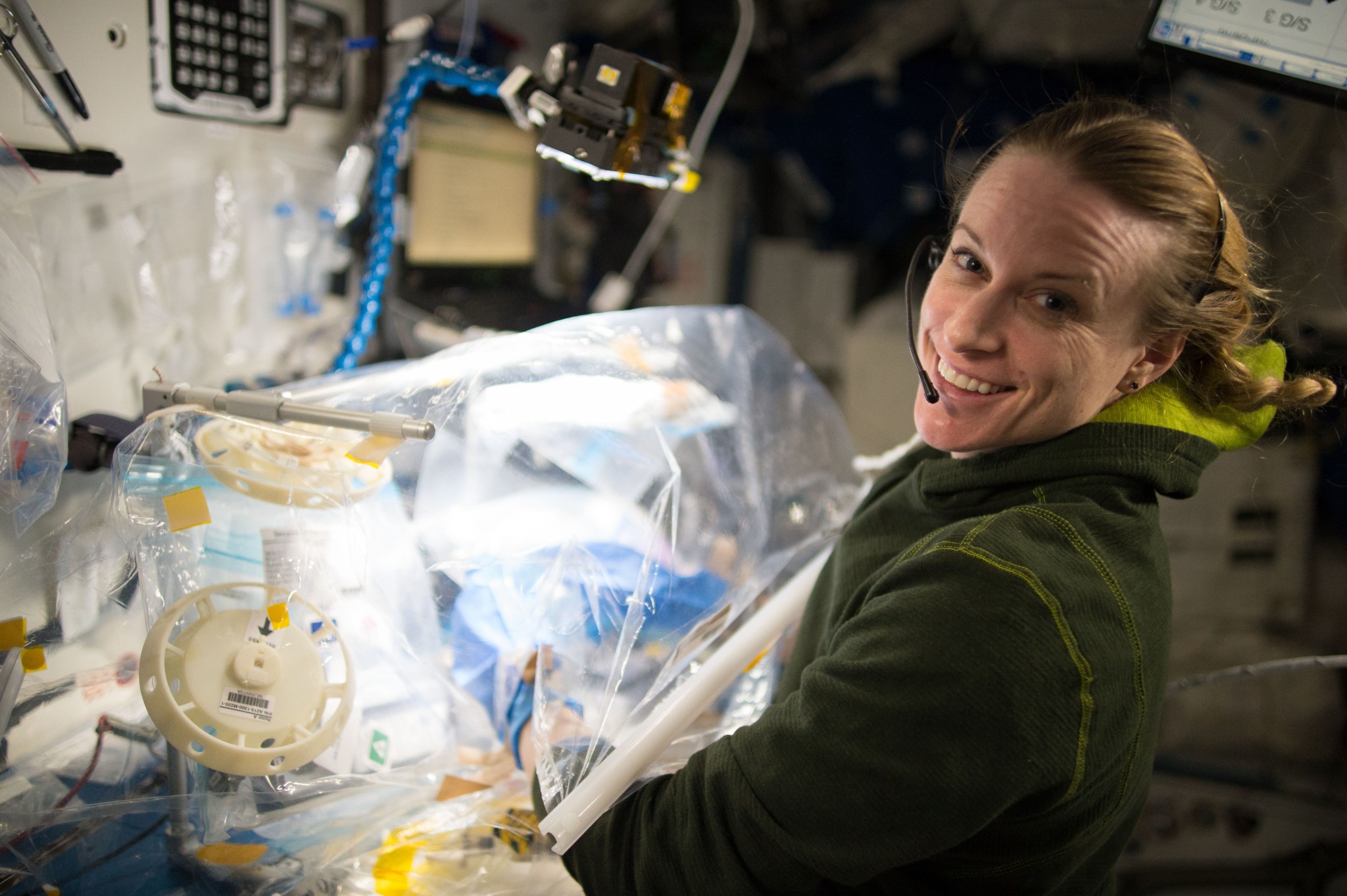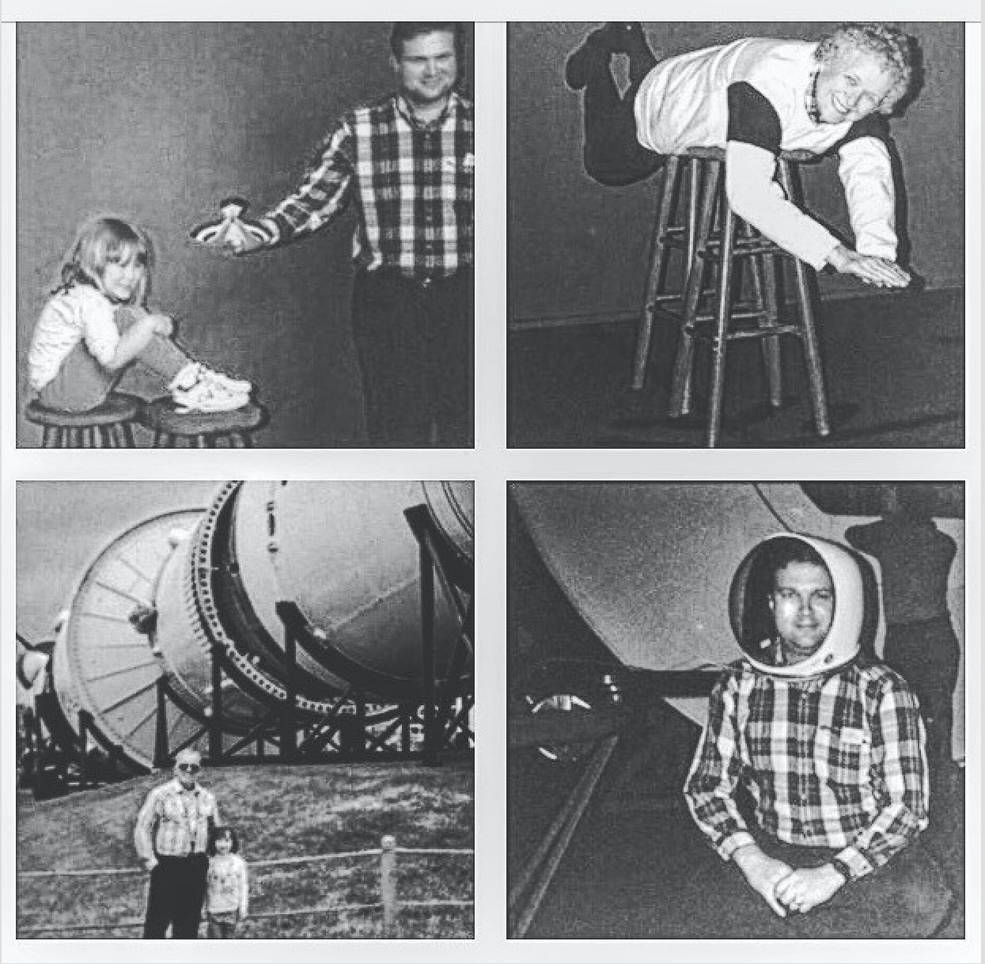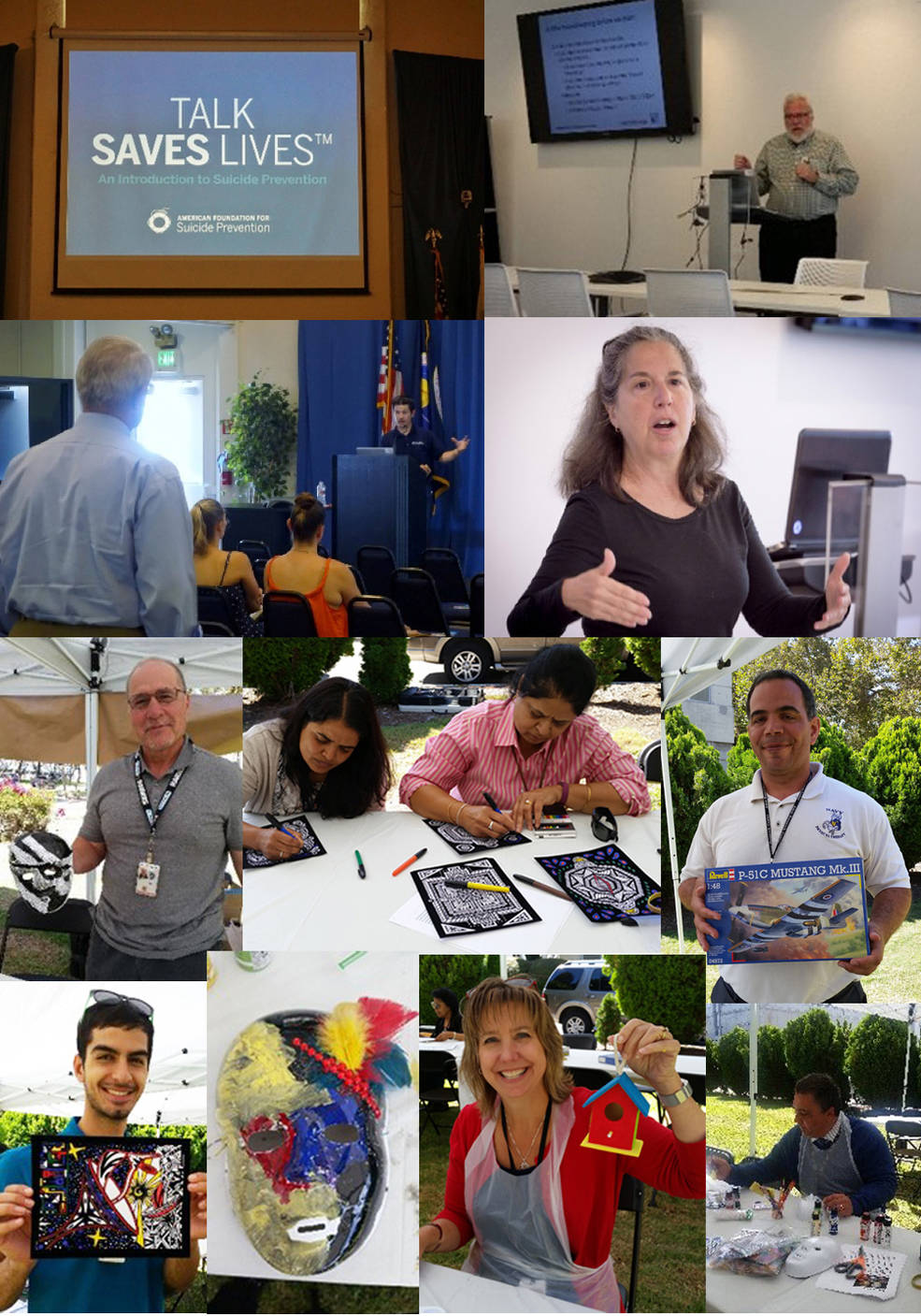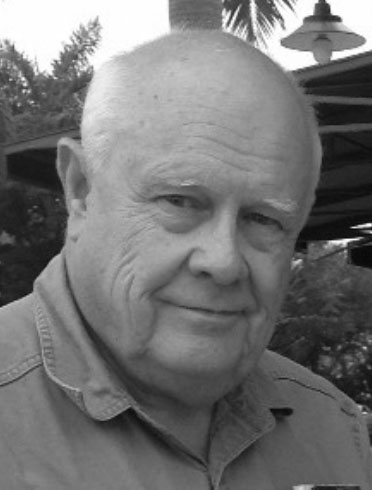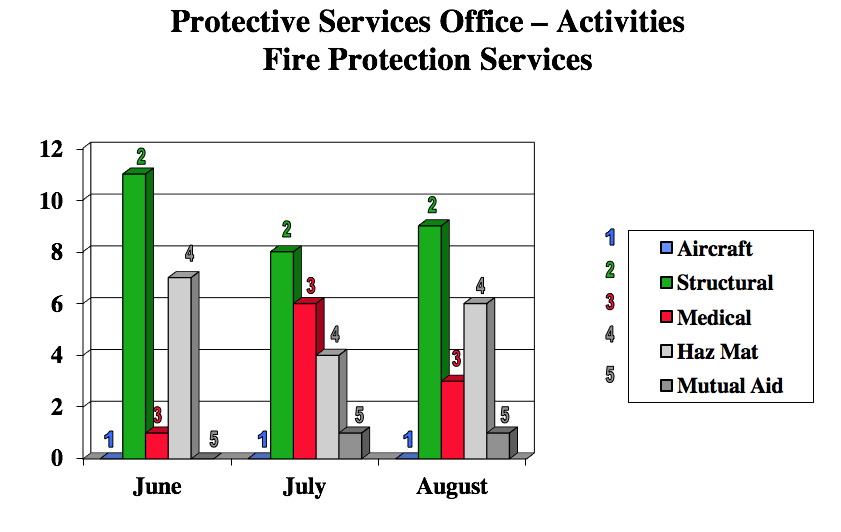September 2017 issue of Ames' newsletter, the Astrogram
From Silicon Valley to Saturn, Cassini’s Grand Finale is Only a Beginning
by Frank Tavares
On Sept. 15, 2017, a month before the twentieth anniversary of its launch on October 15, 1997, NASA’s Cassini spacecraft plunged into Saturn’s atmosphere in the conclusion of 13 years of exploration of Saturn, its rings and moons.
Cassini provided new understanding of the planet’s rings, atmosphere and internal structure. Studying its moons, Cassini discovered liquid methane lakes on Titan, and revealed an ocean beneath Enceladus’ ice-covered surface, with geysers propelling its water into space. These discoveries offer insight into the formation of our own planet, and help guide the search for life in our solar system and beyond.
“Saturn is the second-largest planet in the solar system, and with its rings and many moons, perhaps the most complex,” said Dale Cruikshank, an astronomer and planetary scientist at NASA Ames and collaborator on Cassini. “As such, it is a window on the earliest history of the solar system, and with the rich inventory of organic molecules found on some of those moons, gives us clues to an understanding of the origin of life on Earth and possibly elsewhere.”
For full feature story, see: https://www.nasa.gov/feature/ames/from-silicon-valley-to-saturn-cassini-s-grand-finale-is-only-a-beginning
Solving the Mystery of Pluto’s Giant Blades of Ice
by Abby Tabor
NASA’s New Horizons mission revolutionized our knowledge of Pluto when it flew past that distant world in July 2015. Among its many discoveries were images of strange formations resembling giant knife blades of ice, whose origin had remained a mystery.
Now, scientists have turned up a fascinating explanation for this “bladed terrain”: the structures are made almost entirely of methane ice, and likely formed as a specific kind of erosion wore away their surfaces, leaving dramatic crests and sharp divides.
These jagged geological ridges are found at the highest altitudes on Pluto’s surface, near its equator, and can soar many hundreds of feet into the sky – as high as a New York City skyscraper. They are one of the most puzzling feature types on Pluto, and it now appears the blades are related to Pluto’s complex climate and geological history.
For full feature story, see: https://cms.nasa.gov/feature/ames/solving-the-mystery-of-pluto-s-giant-blades-of-ice
Diagnosis in Space: WetLab-2 Sends Molecular Biology into Orbit
by Abby Tabor
To diagnose a patient, a hospital may send samples of blood or tissue to a molecular biology lab for testing. When humans embark on long-term space exploration, and samples can’t be sent back to Earth for analysis, they’ll need to perform their own medical tests.
NASA has achieved the first step toward making this a reality, with the successful development and use of WetLab-2. This system allows the analysis of gene expression – the process by which information stored in an organism’s DNA is turned into proteins and other products necessary for life – to be conducted entirely on board the International Space Station.
“The importance of WetLab-2 lies in providing the end-to-end ability to process a biological sample for gene expression analysis – from raw tissue to data – all while in orbit,” said Eduardo Almeida, WetLab-2 project scientist at NASA Ames. “That is an absolute first.”
Studying gene expression can reveal a bacterial infection, for example, by detecting the bacteria’s genes in a patient’s sample. The same is true for other infectious agents, such as viruses, or for diagnosing different cancers. With that information, doctors can choose an appropriate treatment.
For full feature story, see: https://www.nasa.gov/feature/ames/diagnosis-in-space-wetlab-2-sends-molecular-biology-into-orbit
NASA and GSA Plan for Future Silicon Valley Housing
by Jessica Culler
Using its Enhanced Use Lease Authority, NASA announces its plans to enter into a long-term lease to construct and operate a minimum of 1,930 housing units in Silicon Valley. The U.S. General Services Administration (GSA), working in partnership with NASA, will issue a fall 2017 request for proposals on the agency’s behalf to solicit interest from the housing development community.
The government is seeking a qualified lessee to construct and operate housing on approximately 45-acres of federal property located at Moffett Field, California. This is the site of NASA Ames, several other government organizations and tenant commercial and academic entities.
For full feature story, see: https://www.nasa.gov/press-release/ames/nasa-and-gsa-plan-for-future-silicon-valley-housing
What Does Kepler Have Its Eye On?
by Michele Johnson
Now in the fifteenth observing campaign of its K2 extended mission, the Kepler Space Telescope is studying more than 23,000 objects located in the direction of the constellation Scorpius. The cartoon illustrates some of the objects of interest that Kepler is observing from Aug. 23 to Nov. 20, 2017.
In this swath of sky, called Field 15, Kepler will monitor a variety of astronomical sources of light, including faraway galaxies, star clusters, planetary systems and brown dwarfs. Closer to home, comets traveling from the outer reaches of our solar system on their orbital dance with the sun, and occupants of the main asteroid belt between Mars and Jupiter, will captivate the gaze of the multipurpose planet-hunter.
For full feature story, see: https://www.nasa.gov/image-feature/what-does-kepler-have-its-eye-on
First-Ever NASA in Silicon Valley Solar System Showcase Held
NASA Ames invited the public to its NASA Silicon Valley Solar System Showcase event held Sept. 22, 2017. This was the inaugural event in a series of small-scale open house opportunities for the public to explore NASA in a variety of topics. The goal for the event series is to share the innovative science, technology and important research conducted at Ames by immersing the public in NASA missions, programs and projects. The theme of the September event was centered around NASA’s exploration of our solar system and beyond – including nearby celestial bodies and planets – and the research that Ames scientists are conducting on and around Earth, in aeronautics and science experiments aboard the International Space Station.
The exhibit layout was inspired by our solar system and included demonstrations for visitors to learn about an array of Ames research. NASA experts offered 15-minute lightning talks on a variety of topics, including:
Searching for Potentially Habitable Planets: The Kepler and K2 Mission
SOFIA: Observing the Solar System and Beyond from 40,000 ft.
New Horizons and Pluto science
Space biosciences
Swarms of small satellites
Engineering small satellites and technology demonstrations
Mars helicopter concept
Meteorites and astrobiology
Humans and technology working together for safety, efficiency and mission success
Partnering with NASA
Employees Recognized at 2017 Ames Honor Awards Ceremony
Ames Research Center presented the 2017 Ames Honor Awards on Sept. 26, 2017. A list of the award recipients follows.
Congratulations to these deserving employees. For additional awardee photos, while onsite at Ames, visit: https://ails.arc.nasa.gov/.
Administrative Assistant Support/Secretary
Merle D. Simbe
Administrative Professional
AnJennette E. Contreras-Rodriguez
Michelle N. Inouye
Best First Paper
Mary Beth Wilhelm
Contractor Employee
Beomseok Kim, USRA
Sungshin Y. Choi, Wyle Labs
Lynette I. Forsman, Deltha-Critique
George E. Gorospe, SGT, Inc.
Paul G. Guido, Wyle Labs
Michelle M. Hing, Wyle Labs
Kelsey L. Hoffman, SETI Institutekelsey
Dong-il Moon, USRA
Ryan C. Spaulding, Computer Sciences Corporation
Peter G. Tenenbaum, SETI Institute
Vinh To, SGT, Inc.
Greenfield T. Trinh, SGT, Inc.
Diversity and Opportunity
Joshua S. Alwood
Ali Guarneros Luna
Education and Outreach
Dora M. Herrera
Engineer
Nagi N. Mansour

Group/Team
Ames Early Career Network Leadership Team
FINESSE
Lunar Orbiter Image Recovery Project
NASA FIRST EV Charging Station Project Team
NASA UTM Technical Capability Level 2 Demonstration Team
NASA-Nissan Partnership Team
NEO SDT Impact Risk Assessment Team
Performance Adaptive Aeroelastic Wing Team
Volcanic Emissions Retrievals Experiment (VEREX)
Mentor
Kurtis R. Long
Project Management
Laura T. Iraci
Bernadette Luna
Special Appreciation
Andrew Abercromby, Steve Chappell, Kara Beaton (Johnson Space Center)
Student
Tomer Arnon
Supervisor/Manager
David D. Alfano
Marianne Sowa
Technician
Alexander Valdez
Family Travels
by Monica Ebert
I come from a family who loves to travel–we would take long road trips and plane rides, traveling to 50 states, 45 countries and seven continents. My parents’ goal was to give us a real world education, to show us that the place where we grew up is not the center of the world and there are many perspectives to appreciate.
My family’s trips were an extension of the ones my dad took when he grew up; his parents wanted that same perspective for him. There are many teachers in my family, both on my mother and father’s side, so education was always a priority. My grandmother, Annamae, supported my education and throughout the years saved tuition money for her grandchildren. I chose to study science in hopes of becoming an astronaut, the next natural step after traveling the world. I would study in Florida where the astronauts launch from, train in Houston where my aunt and uncle live, then land at Edwards Air Force base where my grandparents lived. It was a perfect plan theoretically, but very difficult to execute. I studied and worked beyond what I thought was possible, and secretly added majors to maximize the value of my grandmother’s investment.
What started as an astrophysics major turned in to a triple major with physics and interdisciplinary science. Only my advisors knew about this, as it would be the big reveal at graduation. As perfect plans go, reality inevitably interferes. During the process, both of my grandparents passed away. I was devastated. My motivation was seeing their reaction to the success of their legacy, and to show them how much I appreciated their support through action.
Legacy moves on beyond our lifetimes. I was determined to follow through and show my parents the same result. At graduation, the president of my school announced that for the first time in the school’s 50 year history, someone is graduating with three bachelor’s degrees. Finally, my efforts were revealed and the finish line was crossed, but that was really the beginning of the journey.
I continued my education in France for a master’s program where I had the opportunity to study human spaceflight, and tour the European Space Agency (ESA) astronaut training facilities in Cologne, Germany and Roscosmos training center in Star City, Russia. I landed an internship at Johnson Space Center and saw how NASA trains astronauts too. Everything seemed obtainable, just had to put in a few decades of work to see the fruits of labor.
After graduation, I moved to the Bay Area and taught math and science to middle and high school students, and supported educational and outreach activities locally at Ames. Last summer, I was able to bring my dad on a trip with Ames summer interns touring the space industry in Southern California. We went to Mojave and stood over Antelope Valley with Palmdale in the distance, where his mother lived out her last days; over the same fields where the original astronauts set records…back to where it all started. We toured the commercial spacecraft factory and saw the future of spaceflight blossoming. The shuttle has been retired, but soon we will be able to purchase tickets to space.
Now it is 2017, a decade later, and I have been working at NASA Ames for three years. During the day, I work with a team to design new satellite missions that advance technology development and our scientific understanding of the solar system. In the evenings, I teach high school classes to support the next generation of explorers, as my family supported me. My first astronaut application was submitted last year, and as always will continue to learn new skills for the next round. Now, I realize I have achieved the original goals; every day is a state of exploration and discovery. We are living our childhood dreams now, building the future.
Thank you for everything Annamae, Rest in Peace. Ad Astra
September is National Suicide Prevention Awareness Month
September is National Suicide Prevention Awareness month and is intended to help promote resources and awareness around the topic of suicide prevention and how you can help others have the conversation, without increasing the risk of harm. Suicidal thoughts can affect anyone regardless of age, gender or background. Suicide is the third leading cause of death among young people and is often the result of mental health conditions that affect people when they are most vulnerable. The Ames Veterans Committee (AVC) hosted talks and opportunities to practice mindfulness throughout the month of September.
Ryan Ayers, Northern California Area Director, American Foundation for Suicide Prevention, presented the talk,”Talk Saves Lives,” at Ames on Sept. 12, 2017, (top two left photos, photos by Robin Lopez, volunteer with the Greater San Francisco Bay Area Chapter, AFSP) along with Gordon Doughty, board member, Greater SF Bay Area Chapter, AFSP. This upbeat presentation detailed the common risk factors for suicide, warning signs to look out for and instructions on what to do if concerned about someone. For more information, visit: www.afsp.org
Frederick Macrae, from the Palo Alto VA Administration, presented “S.A.V.E.” on Sept. 14, 2017, at the center (top right photo, photo by Femy McGrath). The Palo Alto VA Administration services our service members, friends and families. This talk was an opportunity to learn about your risks, benefits and how you may be able to start the conversation.
Art Therapy Day was held on Sept. 19, 2017, where employees who participated could bring out their creative side at the arts and crafts booth (bottom seven photos, photos by Femy McGrath). There were various projects such as building bird houses, painting masks and coloring.
The special talks ended with “Mindfulness and the Work Place,” presented by Julie Forbes, on Sept. 21, 2017 (second down from top, right side, NASA photo by Don Richey). The talk was hosted by both the Women’s Influence Network and the Office of Diversity and Equal Opportunity. Forbes focuses on stress reduction and mindfulness. Stress is an inevitable part of daily living. When unaddressed, it can lead to physiological, emotional, cognitive and interpersonal symptoms that throw you out of balance and take a toll on your quality of life. You can learn to develop awareness skills by accessing your inner resources to relieve stress and improve your health and general sense of well-being.
The talk helped participants to:
– Recognize automatic reactions to stress
– Understand mindfulness as a means of cultivating awareness
– Experience simple mindfulness practice to reduce stress and renew a sense of balance
– Apply mindfulness in your daily work life
Julie Forbes, Ph.D. is an educator, consultant and facilitator offering stress reduction and mindfulness to corporate and community organizations, groups and individuals. Currently, she is teaching mindfulness-based stress reduction programs at variety of locations including Palo Alto Medical Foundation, Kaiser Permanente and Avenidas. Julie has worked in the computer industry since 1982 and received a doctorate in psychology in 1999. For mindfulness tips, visit her blog site at: www.mindingyourstress.com
In Memoriam …
Former Ames Physicist, Thomas Snouse, Passes Away
On Aug. 23, 2017, his 84th birthday, Thomas William Snouse passed away. He was a retired physicist, product developer and entrepreneur. The son of Harold and Mary (Thompson) Snouse, Tom was born in Ohio and grew up on his family farm in Galesburg, Illinois. He graduated from Stanford University, class of 1955 and received a master of science degree from San Jose State College.
Tom served his country as a naval aviator, piloting the Douglas Skyraider attack bomber. During the Mercury and Apollo programs, he worked at NASA Ames performing basic research in ultra-high vacuum and ion bombardment of metals. After a brief hiatus in Hawaii collecting reef fish, he became part of a team at Varian Associates, which developed award winning, commercially successful high-vacuum pumps.
He was a senior member of the American Vacuum Society and a member of the American Physical Society. He was developing new inventions to the end, and published two books in the last years of his life. He lived in a world of intellectual ideas and enjoyed nothing more than a good debate.
Tom’s first wife, Betty Joanne (Ashmeade), died in 1990. He married the love of his life, Gale (Ayers) Porr, in July, 2009. He loved playing tournament bridge and was a Life Master. For many years, he wrote a Sunday bridge column syndicated by the San Jose Mercury News. He was preceded in death by his stepson, Warren Delano. He is survived by his wife, Gale, his daughters Elizabeth (Russel) Harlan, Janet (Curtis) Henderson and Susan Snouse, and his stepchildren Jennifer (Marc) Cohen, Walter (Susan) Porr, Jr., and John (Mary) Porr, as well as 15 grandchildren and step grandchildren.

